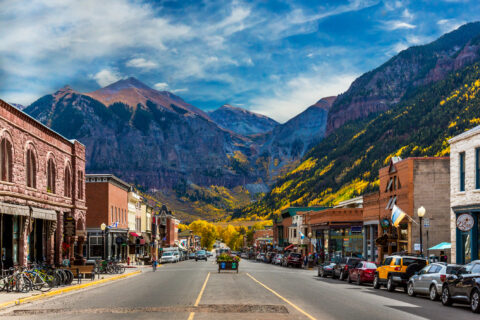A new report identifies ways that communities across the US are turning their climate-emergency declarations into carbon-reducing actions.
Why have nearly 140 local governments in the US—from Hoboken and suburban, Alexandria, VA to Iowa City and Los Angeles—formally declared a climate emergency? And what impact can this really have on climate change?
For most of these local elected officials, adopting an emergency declaration is an opportunity to visibly express the deep concern they and constituents have about the growing climate crisis. Their declarations urge federal and state governments to do much more and do it much faster to reduce greenhouse gas (GHG) emissions. Since 2017, a similar desire has led about 1,800 local governments worldwide to approve climate emergency declarations.
But some communities have gone beyond advocacy as they seek greater impact. They are using their declarations to launch many new actions aimed at cutting local and regional emissions. They explain to residents that their more aggressive efforts are not just about climate change –they are about creating more livable, safe, and healthy communities. These local governments have also taken up a cause that just a few years ago only had a few advocates: the need for a “just transition” to a post-fossil fuel economy.
“This is Not a Drill,” a new report by the Innovation Network for Communities and the Carbon Neutral Cities Alliance, identified five strategies and the numerous actions that have been pursued by 15 of these ambitious communities in North America, Europe, and Australia, including Iowa City, Portland, Oregon, San Francisco, Toronto, and Vancouver. These strategies and actions can work for communities that are just starting on emissions reduction or have been active for years. They can be pursued as part of a comprehensive plan or as stand-alone approaches.

The strategies and some of their related actions:
- Accelerate carbon-reduction targets. Climate-emergency communities adopt impressive goals for local emissions reduction, usually a 100% reduction well ahead of 2050. These communities also lay out ambitious goals for emissions reduction in their key emissions-producing sectors: transportation, buildings, waste, and energy supply.
- Expand actions for reducing local emissions. The local governments are initiating new actions to meet their accelerated reduction targets. They are pressing for existing and new buildings to rely increasingly on electricity, while pushing for energy supply to become more renewable. They are adopting incentives to increase use of public transit while establishing car-free zones, increasing bicycle networks, and making the community more walkable. They are taking actions to reduce waste, capture all organic materials before disposal, and promote reuse and recycling of construction waste.
- Tackle emissions produced outside local boundaries. The communities are also working to reduce emissions produced outside of their boundaries, so called “imported emissions” such as those that result from growing food or manufacturing products that people in the communities consume. They are encouraging local agricultural production and promoting plant-based diets that are less carbon-intensive to produce. They are identifying ways to reduce emissions from airports and maritime traffic and advancing changes in construction practices to use more mass timber, low-carbon concrete, and recycled asphalt.
- Draw down carbon through natural means. The local governments are expanding investments in ways to remove carbon dioxide from the atmosphere using natural methods such as composting of organic waste and tree planting. To substantially increase the number of trees they are partnering with surrounding regions that have available land.
- Upgrade local government’s decarbonization capacities. Lastly, the communities are investing in tools and partnerships to increase local capacity to deliver emissions reductions. They are adopting carbon budgeting methods, adding low-carbon criteria to their procurement guidelines, engaging with local businesses, universities, and other potential allies, and providing small grants to local community-based organizations for projects that help achieve the government’s goals.
“This is Not a Drill” also details the community-engagement and planning processes that two quite different local governments—Vancouver and Mornington Peninsula Shire, a county-level government in Australia—used to develop and start implementing new actions in light of their emergency declarations.
Taken together, these strategies add a new chapter to the decisive actions many elected leaders and municipal staff are already taking to accelerate climate efforts and adapt to current and future conditions. As similar efforts at the national level slowly roll out and the US repairs its reputation as a global leader in climate action, we cannot overlook the power of local movements driven both by residents and their elected leaders.
In their use of the strategies and actions summarized above, climate-emergency communities are modeling forward-thinking pathways for other communities across the country, and demonstrating that if implemented equitably and thoughtfully, decarbonization will create more livable communities for all residents.









